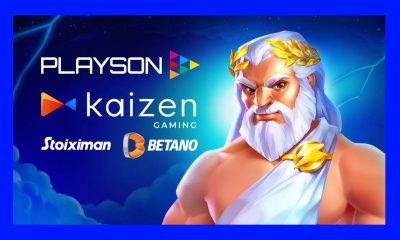Latest News
Cryptocurrencies versus a financial crisis
 Reading Time: 4 minutes
Reading Time: 4 minutes
The Crypto Market has not yet passed the most important test
Bitcoin, the most popular cryptocurrency, has existed for over 9 years, although the cryptocurrency market started to gain most popularity last year. However, this period of time is not that long enough to be able to assess how the cryptocurrency market will behave in the long term and if it will grow, as its supporters expect. All this is because the cryptocurrency owners did not come into contact with the key factor that allows to assess the durability of any given market – the financial crisis.
How will Bitcoin and other cryptocurrencies behave in the face of the financial crisis?
We can distinguish two extreme approaches to this issue. People counting on the fact that the cryptocurrencies will replace FIAT currencies in the future and completely change the financial system believe that the global financial crisis will be a period of bloom for the cryptocurrencies. On the other hand, sceptics believe that the crisis will be very acute for this market – there will be drastic falls and a large part of the projects may not survive. The latter group includes American investor James Chanos, known for catching assets that can be earned from short selling.
Chanos warns that people counting on the fact that the cryptocurrencies purchased by them will perform the function of a value storage like the real estate market during the crisis will be very disappointed. In his opinion, periods of turbulence on the markets are the worst time to keep the cryptocurrencies. He even said that it would be a much better idea to keep… food.
“The last thing I would like to have when everything falls asleep is Bitcoin,” said Chanos in an interview with the Institute for New Economic Thinking.
According to Chanos, cryptos are only a speculative game, hidden under the slogan of a revolution of the traditional financial system. He doesn’t openly call Bitcoin fraud, but points out that some projects may be so.
The bull market is the source of the success of the cryptocurrencies?
While the usability of cryptocurrencies is a subject of discussion, Chanos draws attention to an important factor that has made investing in cryptocurrencies so popular. This is a certain repeatability of behaviour, correlated with cycles on financial markets. It’s all, of course, about the rises and the downturns, and their impact on the financial decisions.
Bear markets have it to each other that they significantly increase the level of risk aversion. During the bull market, this level of risk aversion decreases. The problem, however, is that this decline does not stop at reasonable levels. Long-lasting rallies make investors willing to take more and more risks and even make investments that they would normally consider inappropriate. As a result, a prolonged bull market is an ideal environment for the development of speculative bubbles or dishonest investment patterns (e.g. financial pyramids or ponzi schemes). This is also facilitated by low interest rate levels, which discourage people from holding savings on secure deposits. Investors in such conditions are more likely to choose riskier investments in order to achieve a satisfactory return. The gambling and sports betting industry is thriving in these conditions with sites like the Sportsbet offering traditional betting but with Bitcoins. This increases the risks associated with gambling tremendously – when we gamble using FIAT currencies we know that when we win 400$ at blackjack, we will come home with 400$ (minus possible casino fees). But when we gamble with cryptos? We can come home with our 400$ in BTC and wake up next morning to 800$ or 200$. This is indeed a silent revolution, and not only the gambling and betting sites know that.
A repetition of the Internet boom?
Chanos reminds us that the bull market ended at the beginning of the 21st century with a dotcom bubble. Just as the dotcom boom contributed to the proliferation of companies connecting to the Internet industry, so now, like mushrooms after the rain, new cryptocurrencies are emerging, and companies are appearing on the stock exchanges trying to gain publicity thanks to the link with blockchain technology. The bear market of the beginning of the last decade ended with strong discounts of the leading entities from the dotcom sector and cleared the market of smaller players and entities impersonating Internet business.
Will the same fate await the cryptocurrencies and the ICOs? Such a scenario seems plausible. As in the case of grants, the largest projects such as Bitcoin or Ethereum may remain on the market, which on the one hand will lose out on a general sale, but some of these losses will be compensated for by the capital fleeing from smaller projects.
Why should the crypto owners lose money during the financial crisis at all?
If we treat the cryptocurrency market as other investment markets, the risk parameter should be a key one. During financial crises, the highest outflow of capital is recorded in high-risk markets. This is transferred either to cash or to low-risk markets (so-called safe harbours).
The cryptocurrency cannot currently be considered to be either a cash equivalent or a safe haven. Globally, traditional currencies are preferable to cryptocurrencies and this should not be expected to change until the next financial crisis. It should be remembered that the capital circulating on the financial markets is mainly institutional capital, i.e. still sceptical about cryptos.
To put it very simply, all of this is primarily about the already mentioned risk parameter – cryptocurrencies are characterised by a much higher investment risk than financial instruments that do not use leverage. On the one hand, it gives a chance to achieve high rates of return (as in the previous year), and on the other hand, it poses a threat of significant slips, as in this year. The financial crisis and the accompanying economic collapse are making risk aversion drastically increasing. The uncertain high profit in the future is no longer so attractive, especially when the spectre of redundancies in companies and difficulties in finding new jobs arise.
Source: Latest News on European Gaming Media Network

Latest News
Vixio Strengthens Trust and Innovation with ISO 27001 Certification and Next-Generation Workspace Platform
Reading Time: 2 minutes
Vixio, a leading provider of regulatory intelligence and change management solutions, today announced two major milestones: achieving ISO 27001 certification for information security management and launching the latest evolution of Vixio Workspace, the company’s AI-enabled workspace to help compliance teams simplify compliance processes.
Together, these developments demonstrate Vixio’s continued commitment to helping compliance professionals operate with confidence, efficiency, and trust in an increasingly complex regulatory environment.
Stephen Lovell, Chief Product Officer for Vixio, said: “Our clients rely on Vixio to deliver accurate, timely and trusted regulatory intelligence. Achieving ISO 27001 certification and launching our enhanced Workspace platform reflect twin priorities: protecting sensitive information to the highest international standard, and equipping compliance teams with powerful, intelligent tools that simplify regulatory complexity. We’re turning our tried-and-true horizon scanning into simpler horizon planning capabilities.”
ISO 27001 Certification: Reinforcing Trust and Data Security
ISO 27001 is the globally recognised standard for information security management systems (ISMS), awarded to organisations that meet rigorous criteria for managing and mitigating data risks. The certification covers Vixio’s operations, systems and processes used to deliver its intelligence platforms and client services, ensuring robust controls are in place to protect sensitive information.
This milestone follows a series of investments by Vixio to enhance its infrastructure, data governance, and security frameworks, ensuring clients continue to benefit from reliable, secure and industry-leading regulatory intelligence solutions.
Vixio Workspace: Powering Compliance with Intelligence and Automation
Vixio Workspace, launched in 2025, is an AI-enabled, centralised, collaborative workspace that connects compliance and business strategy, enabling teams to integrate regulatory insight with workflow execution, create a fully auditable trail, and streamline both compliance and go-to-market processes. Since its launch, client feedback and growing market demand to simplify compliance processes have fuelled the next phase of its evolution.
“We designed Vixio Workspace to bring order to complexity and replace the old-fashioned spreadsheet systems,” added Lovell. “By combining Vixio’s trusted intelligence with secure, evidence-based automation, we’re empowering compliance teams to make faster, more confident decisions.”
Vixio has now expanded the tool with new features to help compliance teams manage regulatory change in one place:
- Triage Tool (‘Smart Inbox’): Available now, the Triage Tool (smart inbox) filters thousands of updates to the few that truly affect users, based on their watchlists, regions, and compliance focus. Using machine learning, it surfaces priority regulatory changes unique to each user.
- Vixio API: Also available now is a Vixio API, which allows clients to seamlessly connect Vixio’s regulatory intelligence and triage workflow into their own internal tools, dashboards, or compliance systems. This is in addition to Vixio Workspace’s plug-and-play deployment, which is designed for teams who prefer a fast, low-effort set up rather than custom integrations.
- Requirements Extraction: Finally, coming soon, Vixio Workspace will feature a Requirements Extraction tool that allows users to search, snippet, and save passages directly from regulatory sources and documents to build precise compliance evidence.
These enhancements give compliance professionals a centralised, intelligent platform that saves time, reduces regulatory risk, and adapts as regulations and business priorities evolve.
“My initial reaction to the new Vixio Workspace tool is that I loved it. I think it will solve so many problems for compliance managers and compliance teams, having that single source of truth, having that workflow tool all built into one,” said Anoushka Thompson, Governance, Risk & Compliance Executive.
For these innovations and more, Vixio was recently recognised as a Compliance Solution of the Year at the 2025 International Business Awards and Best RegTech Platform at the FinTech Breakthrough Awards, both awards received for the second consecutive year. These accolades reflect the company’s continued leadership in delivering secure, intelligent, and transformative regulatory technology solutions to its global client base.
The post Vixio Strengthens Trust and Innovation with ISO 27001 Certification and Next-Generation Workspace Platform appeared first on European Gaming Industry News.
Latest News
Evolution launches Red Baron, a strategic crash game with soaring multipliers
Reading Time: 2 minutes
The post Evolution launches Red Baron, a strategic crash game with soaring multipliers appeared first on European Gaming Industry News.
Latest News
SiGMA Rome Wrapped: ELA Games Takes the Stage to Share Key Insights
Reading Time: 2 minutes
The post SiGMA Rome Wrapped: ELA Games Takes the Stage to Share Key Insights appeared first on European Gaming Industry News.
-
Latest News3 months ago
ReferOn Shortlisted for Acquisition & Retention Partner of the Year at SBC Lisbon 2025
-
Latest News2 months ago
Duels for Friends in Trophy Hunter. Invite your friends and create a shared space for fun and competition.
-
Latest News3 months ago
BC.GAME Launches “Nezha” Slot with Up to 46,656 Ways to Win and 10,000x Max Payout
-
Latest News2 months ago
Announcement: 25th September 2025
-
Latest News3 months ago
NODWIN Gaming Acquires Sony Interactive Entertainment’s Stake in Evo; Becomes Majority Holder
-
Latest News2 months ago
Flamez – A Fiery New Online Casino Contender from Ganadu
-
Latest News2 months ago
The Countdown is On: Less Than 3 Months to Go Until The Games of The Future 2025 Kicks Off in Abu Dhabi
-
Latest News2 months ago
GR8 Tech’s Bet It Drives Wraps Season 1 with Stephen Crystal—From Las Vegas Legends to Global Gaming Leadership

















You must be logged in to post a comment Login